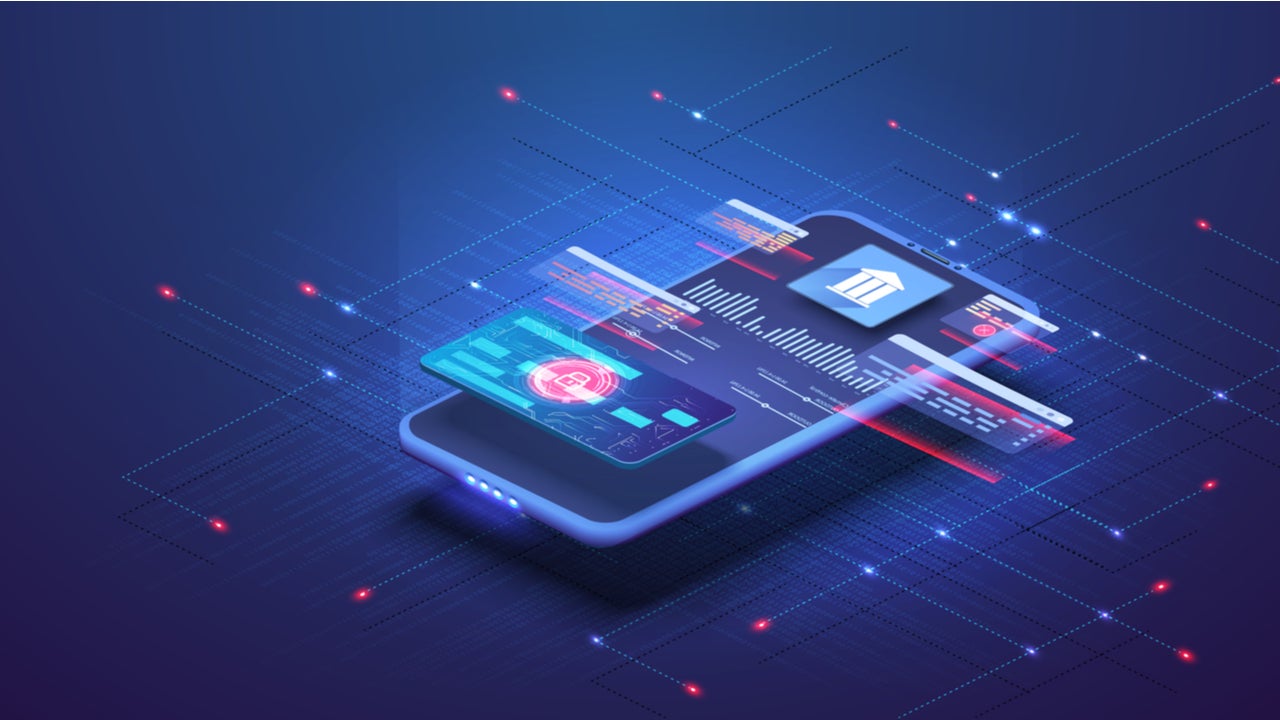
The internet of things (IoT) landscape encompasses various technologies and vendors, ranging from the manufacturers of the sensors and microchips that go inside the connected devices to the telecom operators and wireless radio manufacturers that connect these devices to the internet and the services organisations that help clients stitch everything together.
Listed below are the key technology trends impacting theIoT theme, as identified by GlobalData.
Pragmatic IoT
The volume and velocity of IoT-generated data will dwarf banks’ current data volumes, which is where banks’ legacies will really begin to creak. Banks like JPMorgan Chase—with its announced $12bn in tech spend for 2022—have publicly earmarked much of that for tools and technologies to enable it to extract more value from data, but many banks do not have such deep pockets. Rather than rush to buy new IoT platforms, these institutions are focused on adding value through real-time analytics and making decisions on the data they already have.
Autonomous finance (or closed-loop IoT)
Closed-loop IoT helps drive big cost savings and reduces manual errors for banks. In financial services, with the analogy of driverless financial ‘cars’, in which customers set a financial destination, and an autonomous financial application gets them there, automatically transferring excess funds from a current account to optimise yields, funding the best offers for purchases, and re-financing credit cards, etc.
Embedded and scenario-specific banking
Embedded finance has exploded in recent months. IoT is a great enabler of this by helping banks better reach customers earlier, in specific life scenarios—most obviously, connected car, connected home, and connected customer. In a home context, lenders can partner with electronics and white goods manufacturers to proactively make credit offers to individuals if their purchased items begin to show noticeable wear or face imminent failure. In this scenario, finance is natively embedded into the customer’s need at the moment of awareness, before competing products can be considered.
Risk management
A core element of bank operations is risk management and the identification of credit ratings. Douglas Merrill, Google’s former CIO, says “all data is credit data.” This is certainly logic inherent in Ant Financial’s Zhima Credit, which collects online and offline data across insurance, loan, historical payment, dating, shopping, and mobility data, to assess risk accurately and dynamically.
How well do you really know your competitors?
Access the most comprehensive Company Profiles on the market, powered by GlobalData. Save hours of research. Gain competitive edge.

Thank you!
Your download email will arrive shortly
Not ready to buy yet? Download a free sample
We are confident about the unique quality of our Company Profiles. However, we want you to make the most beneficial decision for your business, so we offer a free sample that you can download by submitting the below form
By GlobalDataHowever, many incumbent banks continue to rely on conventional credit assessment systems, such as a FICO score. This model cannot reflect real-time credit status. IoT can help obtain a higher volume, velocity, and variety of real-time data to drive risk assessment.
Industrial IoT for small and medium-sized enterprises (SMEs)
The size of the prize here is the biggest for segments that are otherwise risky and/or hard to assess. For example, SMEs must go through long and difficult processes to lend from banks, which leads to friction that has helped new SME-focused entrants find a foothold. But IoT-enabled processes can offer visibility into production status, product sales status, and market demands for individual enterprises and/or SME sectors.
Lack of global IoT security standards
We are unlikely to see pervasive IoT without the establishment of a global IoT security standard. The increase in the number of connected devices has significantly increased potential points for cyberattacks and created a massive security gap. IoT security encompasses a range of threat vectors that can be device-based, app-based, network-based, or data-based.
The IoT security market is slowly evolving in two areas. First, IoT-related regulations, such as the US IoT Cybersecurity Improvement Act, which focuses on securing federal IoT ecosystems, are emerging. Second, more manufacturers are designing IoT devices with prebuilt security applications and providing their users with the necessary software updates to patch security breaches.
Lack of global IoT communication standards
Currently, there are a plethora of IoT communication protocols used across the world. For IoT to be pervasive, these protocols need to be interoperable and standardised. There are currently no global IoT communication standards, making large-scale IoT deployment more complex than it needs to be.
The type of communication protocol used typically depends on the use case. For example, for long-range communication on lower power consumption, Low Power Wide Area Network (LPWAN) wireless technologies like Narrowband IoT (NB-IoT), LTE-M, LoRa, and Sigfox are the preferred standards. By allowing only small amounts of data to be transmitted at a time, LPWAN supports large-scale IoT networks sprawling over vast industrial spaces.
For use cases that require short-range communication, Bluetooth and Zigbee are typically the preferred options. These standards are appropriate for the automated home.
5G
With speeds up to 100 times faster than a 4G LTE connection, 5G can be a game-changer for IoT. 2021 will be a year of catch-up as Covid-19 disrupted 5G rollouts in 2020. IoT use cases that require low latency, such as connected cars, predictive maintenance, and wearable tech in healthcare, will benefit the most from 5G.
5G’s ultra-reliable, low-latency communication (URLLC) capacity and support for Time Sensitive Networking (TSN) will be very important for IoT adoption. GlobalData estimates that there were more than 400 million active 5G subscriptions globally by the end of 2020, and this number will rise to more than 3 billion by 2025.
Healthtech
The healthcare sector has long resisted the digital revolution, lagging far behind other industries, but Covid-19 has led to the rapid adoption of medical IoT technologies—such as remote patient monitoring and medical robots—opening up vast digitalisation opportunities for IoT solution providers.
Artificial Intelligence of Things (AIoT)
Within any IoT ecosystem, data is transferred between connected devices and analysed by humans. Some of the data flows are human-to-machine, and others are machine-to-machine (M2M). When analysed in aggregate, these data reveal patterns and trends. Often AI technologies are used to interpret and react to these data flows in real-time. The amalgamation of these two technologies—AI and IoT—has given rise to the concept of AIoT.
AIoT involves embedding AI technology into IoT components. Combining data collected by connected sensors and actuators with AI allows for reduced latency, increased privacy, and real-time intelligence at the edge. It also means that less data needs to be sent to, and stored on, cloud servers.
Intelligent edge computing
As IoT ecosystems become more complex and ubiquitous, some of the data analytics functions are shifting to the edge of the network, closer to the source of data generation, to reduce latency and enable near-autonomous decision making when responding to sensor signals from IoT devices. This is especially important for time-critical use cases such as health monitoring devices or autonomous vehicles, where split-second reactions can save lives.
By running applications and performing processing tasks closer to the customer, edge computing allows autonomous IoT ecosystems to deliver superior performance with reduced latency.
IoT as a Service (IoTaaS)
IoTaaS vendors provide various platforms to assist organisations with IoT deployment without the need for in-house expertise. It aims to make it easy for enterprises to deploy and manage their connected devices. IoTaaS has become an accelerator for enterprise IoT adoption, especially in predictive maintenance, advanced automation, and condition monitoring.
Cloud migration
IoT means more diverse data types, at a greater volume, that must be processed more quickly. Few banks have the in-house storage, processing, and analysis capabilities to do this. But advances in the flexibility and scalability of cloud deployments make this possible for many, at a cost that banks can sustain. Many cloud providers offer analytics as a service that can be run across data coming from multiple different sources, including various IoT-enabled devices.
Digital twins
Digital twins can help optimise IoT deployments for maximum efficiency and help IoT adopters figure out where things should go or how they operate before they are physically deployed.
A digital twin is a software representation of physical assets and processes that allows an organisation to carry out ‘what if’ simulations. These simulations can be used to spot and avert problems proactively, help prevent downtime, and speed up the development of new products.
Wearables
The fastest-growing segments of the wearable technology market are hearables and smartwatches. Covid-19 driven changes in consumer behaviour is driving the adoption of wearables and increasing consumer IoT adoption. As a result, wearable technology vendors are integrating a range of health and fitness monitoring options into their devices, aided by advances in biometric sensor technologies.
Next-gen chips
The emphasis in chip design has shifted from a race to place more transistors onto a square millimetre of silicon to a focus on building microprocessors as systems made up of multiple components, each of which performs a specialised task. As more and more sensors and microcontrollers are packed into the connected devices, the pressure on the semiconductor industry to develop smaller, cheaper, and faster chips ratchets up.
Software defined networking (SDN)
SDN is an emerging architecture for data networks. It allows software—rather than hardware—to control the network path along which data packets flow. It is still under development, but, ultimately, it may replace IP networking, a hardware standard, as the main standard governing the transmission mechanisms of the internet. SDN will have a big impact on IoT ecosystems because it fundamentally changes who controls the data centre.
This is an edited extract from the Internet of Things (IoT) in Banking – Thematic Research report produced by GlobalData Thematic Research.








Related Company Profiles
Google LLC
JPMorgan Chase & Co